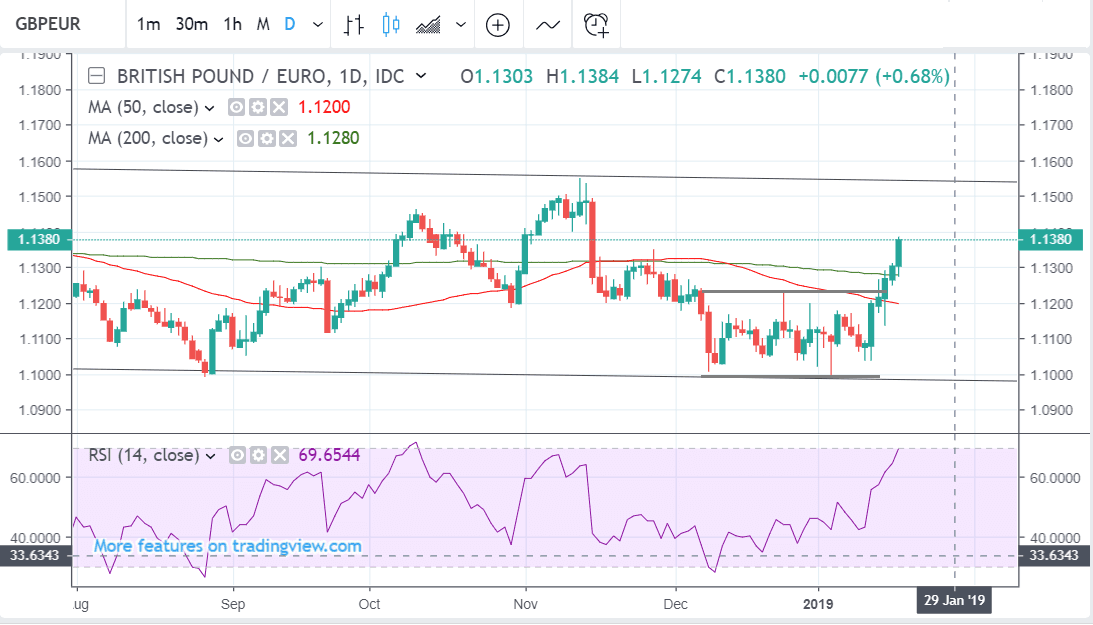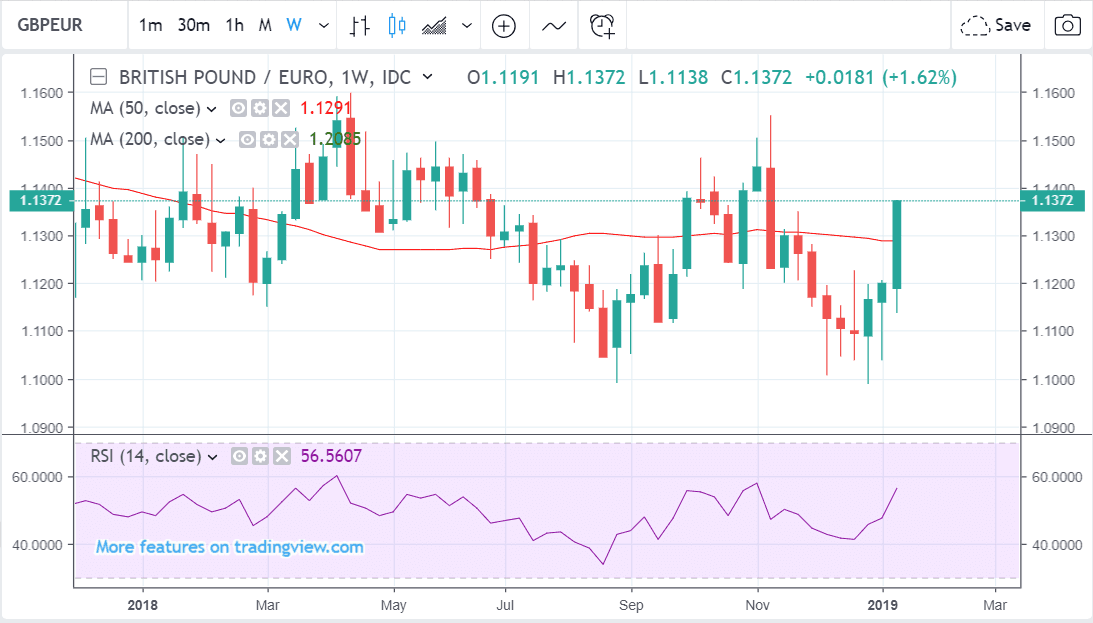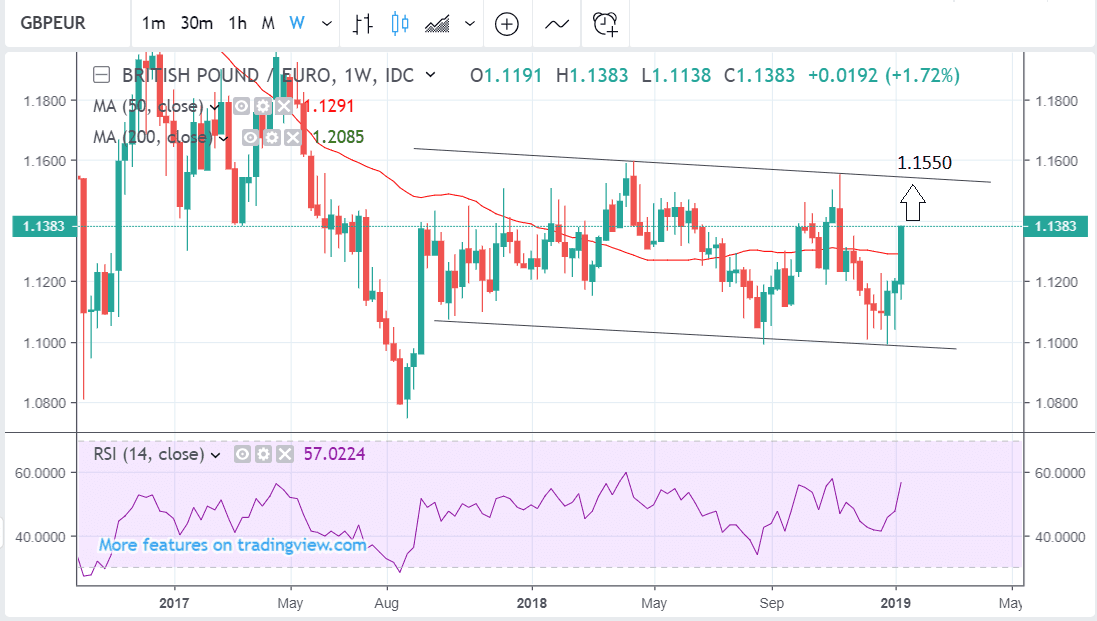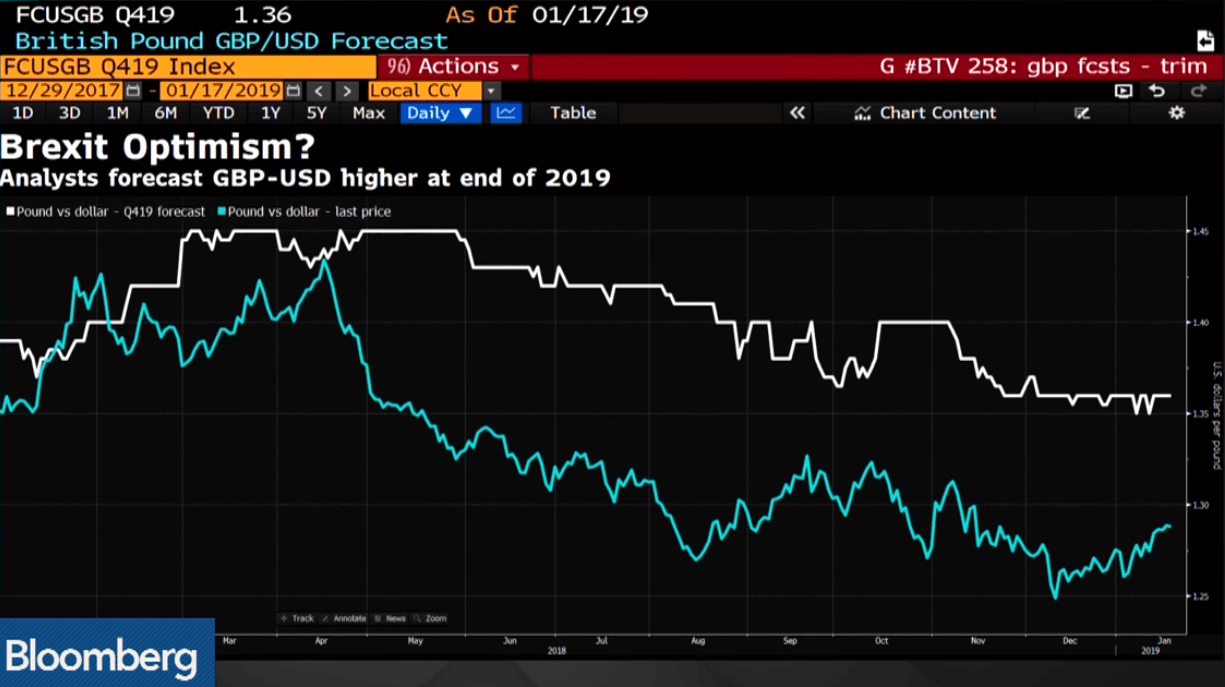Pound-to-Euro Exchange Rate Could go above 1.15
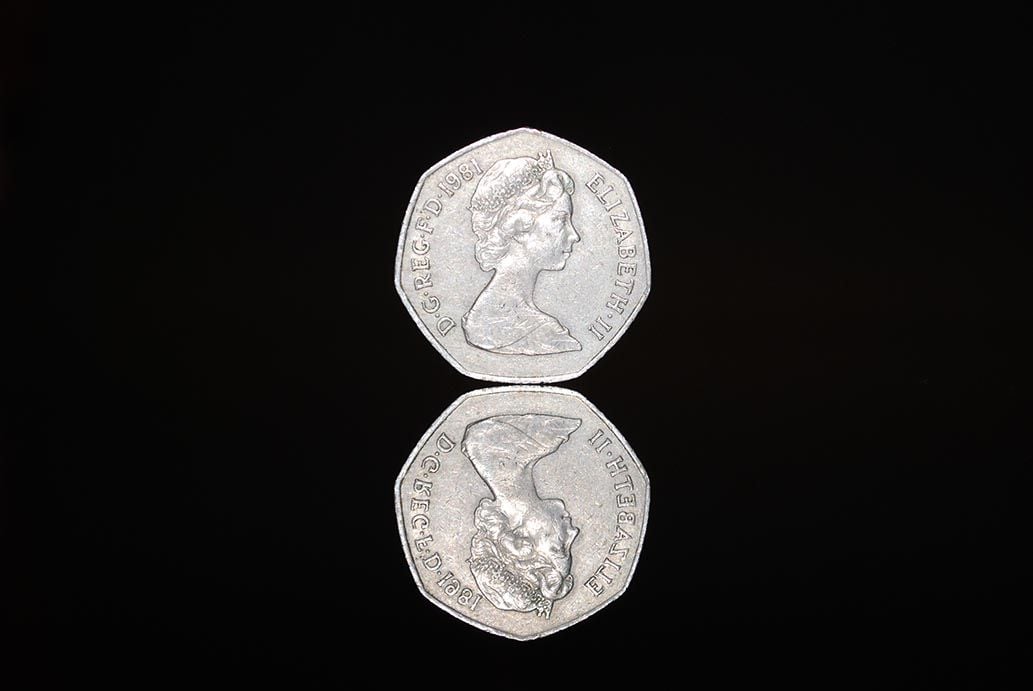
Image © Thomas Otto, Adobe Stock
- Pound Sterling at two-month highs vs. Euro
- Technical studies shows upside momentum dominant
- GBP/EUR breaks out of recent ranges
The British Pound has on Friday, January 18 recorded a fresh two month high against the Euro having achieved a level of 1.14; the last time such an exchange rate was seen was on November 15.
Driving the gains are a fundamental view that the prospects of a 'no deal' Brexit have reduced notably over the past few days with the parliamentary defeat of Prime Minister May's Brexit deal suggesting to markets that rather than increasing the likelihood of a 'no deal' Brexit taking place on March 29, it has actually decreased such a likelihood.
The Pound-to-Euro exchange rate has broken clearly out of the range it was in, as well as above a ‘glass ceiling’ of levels which had been anticipated to present tough resistance to further gains. These hurdles now removed, the upside case for the pair has strengthened from a technical point of view, increasing the probability of an extension even higher.
The main advantage of looking at the markets from the perspective of technical analysis is that a narrative is not required to understand market sentiment i.e. we can cut out the noise created by the headlines and focus on the levels that matter to understand where a currency pair is headed.
Last week saw the pair still trapped within a range between roughly 1.09 and 1.12, although it ended the week at the range highs following a large, latter-day surge. Sterling’s especially strong performance on the previous Friday and the resultant long green candle which formed on that day suggested to us an upside bias in the week ahead and our forecast has proven spot-on.
In the end, the pair broke out of the range and above the first layer of resistance from the 50-day moving average (MA) at 1.1200.
It then continued to rally higher until it reached the next major resistance level at the 200-day MA at 1.1270. Normally this would have been expected to reject the exchange rate as large MA’s often present formidable obstacles to trending prices, but in this case, the pair was not held up for long before it simply pierced the MA and continued through to the other side.
It has now reached a high of 1.1371 at the time of writing, which represents a 1.60% rise during this week alone. Assuming the exchange rate can stay above the key 1.1291 level of the 50-week MA until the end of play on Friday, its outlook will remain bullish going into the week after that.
The RSI momentum indicator is strong and is trading at the same level as it was when the exchange rate was in the 1.14-15s back in November. This suggests strong bullish conviction in the current move and a higher chance of it extending.
On the daily chart, the momentum is even higher than it was in November, further supporting the upside bias on the weekly charts.
How high can the pair go from here?
Ultimately, GBP/EUR will probably continue up to the longer-term range highs at 1.1550. A break above that level would then require an even stronger surge.
It may pull-back temporarily before then but if it falls back below any of the major MAs it has broken on the way up, on a daily or weekly closing basis, then all bets are off.
Sean Lee, a professional trader and founder of FXWW.com says 1.13 was the pivotal level in GBP/EUR to watch, the breaking of which could prompt a "big move".
"I was 85% certain yesterday that the next GBP move was lower, but now I'm more 50:50. Lot of analysis favouring soft brexit or even 2nd referendum, both GBP positive," says Lee. "Risk-reward favours GBP longs now I feel."
Analyst Robin Wilkin with Lloyds Bank notes "another aggressive shift" to the upside for the GBP/EUR exchange rate, with the break of 1.1312 pivot support "opening a move" to next resistance in the 1.1430 region.
Wilkin does however warn that intra-day studies are overbought "and again warn that at least a corrective rebound" in the Euro "is possible".
Time to move your money? Get 3-5% more currency than your bank would offer by using the services of foreign exchange specialists at RationalFX. A specialist broker can deliver you an exchange rate closer to the real market rate, thereby saving you substantial quantities of currency. please see here.
The Pound is Cheap: Morgan Stanley
The British Pound is cheap by historical standards and the low probability of a ‘no-deal’ Brexit means the currency is likely to rise in the future, says Morgan Stanley.
“The probability of a hard Brexit has declined,” says Hans Redeker, head of FX research at Morgan Stanley. “We also have to take into account where Sterling is in respect of valuation.”
The current valuation, as reflected by analysts consensus forecasts, is for GBP/USD to be trading in the mid-1.30s, about five to six cents higher than its current level in the 1.28/9s.
The response of the Pound to the currency flash crash on January 3 was indicative of a lack of bearish intent because although Sterling was driven to low levels by “fast money” it was “not sustainable” says Redeker.
“That tells you that many are not involved in this currency; people wanted to have better clarity, but it also meant there was very little to liquidate,” he adds.
Whilst there is still a chance of a ‘no-deal’ Brexit it is very small: “Are we not moving in Parliament to a much more constructive environment? We also have to consider that in Parliament there is no majority for a Brexit without a deal.” Says the strategist.
The starting level of a currency is another key determinant for forecasting where it will go next - if starting from a low base it is more biased to rise; if from a high level it is biased to fall.
One sign of how cheap the Pound really is can be seen in UK stock market valuation metrics, says Redeker.
The FTSE 100 share index has always traditionally been sensitive to fluctuations in the Pound because of the high proportion of multinational companies in the index. Many listed UK companies generate substantial revenue overseas and so when the Pound is weak it increases the value of their profits, effectively giving their bottom line a free boost.
The Pound’s weakness is reflected in the relatively high dividend yield for UK companies at the moment. The dividend yield is the ratio between the annual dividend paid to shareholders and the share price. This is currently above 4% in the UK, which is considered strong and suggests the British stocks offer good value.
This suggests the Pound actually offers a buffer of protection for UK stocks.
“It (Sterling) is very cheap. When you look at the equity market you have a dividend yield north of 4 (%) and when you look at the yield differential of G10 and Sterling, you see Sterling stands out here, and that actually means it offers protection, and, therefore, I think the consensus of analysts is right but the market is not positioned according to that consensus.” Says Redeker speaking to Francine Lacqua on Bloomberg News.
Time to move your money? Get 3-5% more currency than your bank would offer by using the services of foreign exchange specialists at RationalFX. A specialist broker can deliver you an exchange rate closer to the real market rate, thereby saving you substantial quantities of currency. Find out more here.
* Advertisement

